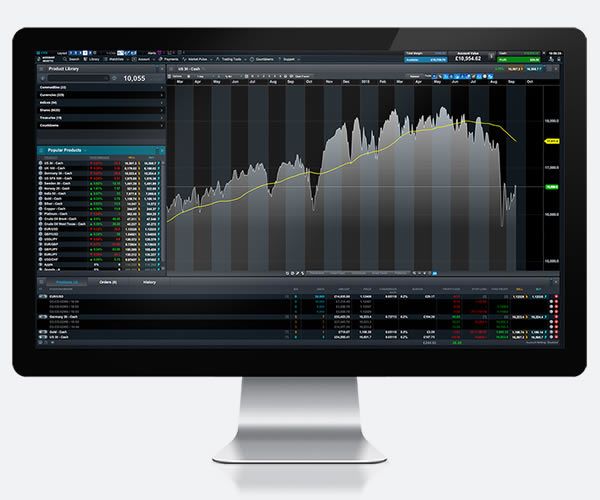Although the visual field provides clinicians with important diagnostic information for many neurologic and ophthalmologic conditions, its evaluation is often perceived as difficult or mysterious. In Field of Vision: A Manual and Atlas of Perimetry, neuro-ophthalmologist Jason J.S. Barton, MD, PhD, and neurologist Michael Benatar, MBChB, DPhil, provide a comprehensive overview of the use of both perimetric devices and bedside testing, and how to interpret the results. The authors focus on the clinically relevant points, providing enough technical detail and anatomic knowledge for the physician to competently examine patients with a perimeter. To develop the clinician's skill in interpretation, the authors include an atlas of 100 real-life cases arranged in anatomic order from retina to striate cortex.
Each case contains a brief clinical vignette, a visual field, and a description of the field and its causal lesion, most with photographs of the pathology. The accompanying discussion addresses the nuances of the field and considers some of the clinical issues relevant to each case.
An additional quiz section of 20 randomly arranged visual fields provides readers with an opportunity to test newly acquired skills in detecting the abnormalities, describing them, localizing them, and making a reasonable guess at their pathology.Simply written and clinically focused, Field of Vision: A Manual and Atlas of Perimetry brings together in an accessible format the specialist knowledge and skills needed by today's clinicians to successfully measure and interpret the visual fields of patients.Keywords.
Keygen windows 7 ultimate 32 bit. If you are attempting to find product key, then you are here. It does not require device necessities, however, grants specific features. No doubt, Windows 7 is a perfect OS. Whenever you want to re-install your Windows previously, you’ll veritably want a product key to get it to execute, and if you can’t find the copy of your serial key, then there are a few hints which you may use to get your windows as commonly it’s saved within the Windows Registry.Windows 7 Ultimate Product Key is the answer of activation of Windows 7. Here we’re going to offer you the solution for activation.

Visual FieldYour visual field, in practical clinical terms, is essentially the area of space that can you can see at the same time. In other words, it refers to your field of vision or how far out peripherally you are able to see without moving your eyes or head. Generally speaking, if light that is reflected or emitted from an object in your surroundings falls onto your retina, then that object will be visible in your visual field.This is one of the ways that visual function is measured. Other ways of testing visual function include, and.WHAT IS A NORMAL VISUAL FIELD?Your field of vision can be measured in terms of degrees from the center. With a healthy and normal eye, you should be able to see approximately 95 degrees temporally (towards your ear) and approximately 60 degrees nasally (towards your nose) from the center. You should also be able to see 60 degrees above and 75 degrees below from the center.

This means each eye gives you a horizontal field range of 155 degrees and vertical field range of 135 degrees at a given time.(Image adapted from )The diagram above depicts the normal horizontal field of vision, including the location of the blind spots for both eyes. In a normal person, the field of vision should span a total width of 190 degrees.The macula, which is the central part of the retina (and is therefore important for central vision), corresponds to the central 12 to 13 degrees of your visual field. The center of the macula, called the fovea, has the highest concentration of cone photoreceptors and corresponds to the central 3 degrees of your field of vision.The optic nerve has no photoreceptor cells. Therefore, light that falls on the optic nerve head (where the optic nerve is attached to the eye) will not be detected. This is why you get a blind spot in your field of vision. The blind spot is approximately 15 degrees towards your ear (temporally) from the center.The International Council of Ophthalmology has suggested the following driving field requirements, which have been adopted by the Driver and Vehicle Licensing Agency (DVLA) in the United Kingdom:- 120 degrees of horizontal field- 40 degrees of vertical fieldIn the United States, the driving field requirements vary from state to state.HOW ARE VISUAL FIELDS ASSESSED?Perimetry is the process of testing your field of vision. There are 2 main types of perimetry: static and kinetic.Static perimetry is the most commonly performed method in clinics and hospitals.
You will be asked to look at the center of an illuminated white screen with one eye (the other eye is covered). Light spots of different brightness levels will flash on the white screen. Your task is to press a button every time you see a light spot.(Image adapted from the internet)If you have or are suspected of having, you will need to undergo static perimetry. It is one of the most important tools in. The most popular automated static perimetry machines are the Humphrey, Octopus and Medmont perimeters.Static perimetry usually tests only the central 30 or 24 degrees, and this takes approximately 4 to 7 minutes for each eye.
Full field of vision tests can also be performed, but they will be time consuming. You can test your own field of vision at:(Image adapted from the internet)Left: a normal visual field as seen from a healthy left eyeRight: glaucoma causing a reduction in the field, as indicated by the black patchesIn kinetic perimetry points of light are moved inwards slowly one by one until you see them. The location where you see the points of light are marked on a piece of paper. The brightness and size of the point of light can be changed.
So the larger and brighter the point of light, the easier it should be seen. Kinetic perimetry is not automated.
Field Of Vision Workbook Pdf Printable
As such, the accuracy of the kinetic perimeter (right) depends a lot on the person operating it.(Image adapted from the internet)Kinetic perimetry is generally used for mapping out neurological field defects rather than for monitoring glaucoma. So for instance, you may have to undergo kinetic perimetry if you have or a stroke affecting your visual pathways.(Image adapted from the internet)Left: Goldmann field of a normal right eye. The red dot signifies the blind spot.Right: Goldmann field showing a homonymous hemianopia. This person is only able to see the right side of his or her field. This is due to a problem on the right side of the visual cortex of the brain (such as in a stroke), causing the inability to see to the left.Finally, confrontation is a simple method of clinically evaluating the field of vision. It does not require any instruments and is easy to do. However, this technique is only useful for detecting gross field defects, such as those that may occur in, ischemic optic neuropathy and stroke.
Field Of Vision Workbook Pdf Download
Field testing with confrontation lacks the accuracy to map out small field defects.With confrontation testing, your visual field is directly being compared with that of your ophthalmologist's (whose field of vision should be normal, of course). This is done either with fingers, or with white or red hat pins.